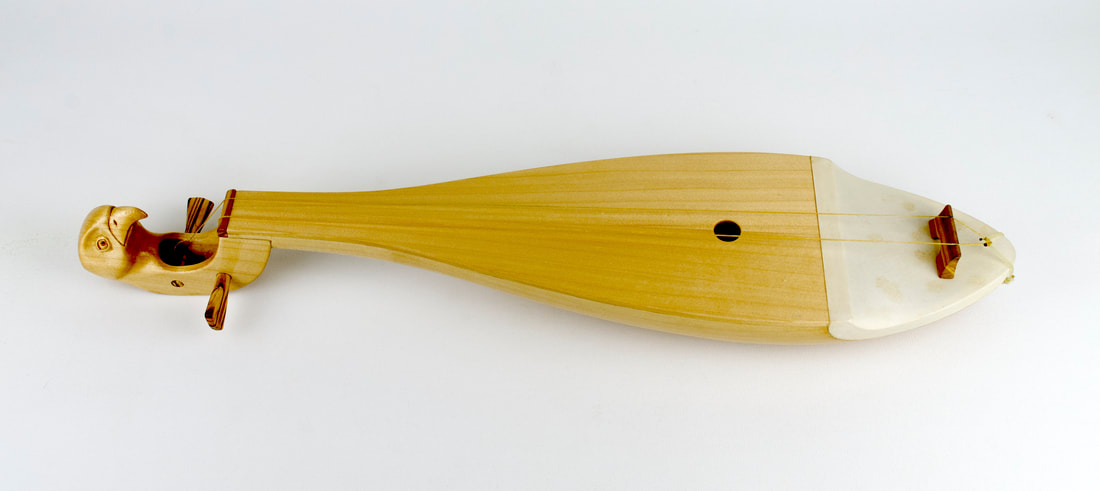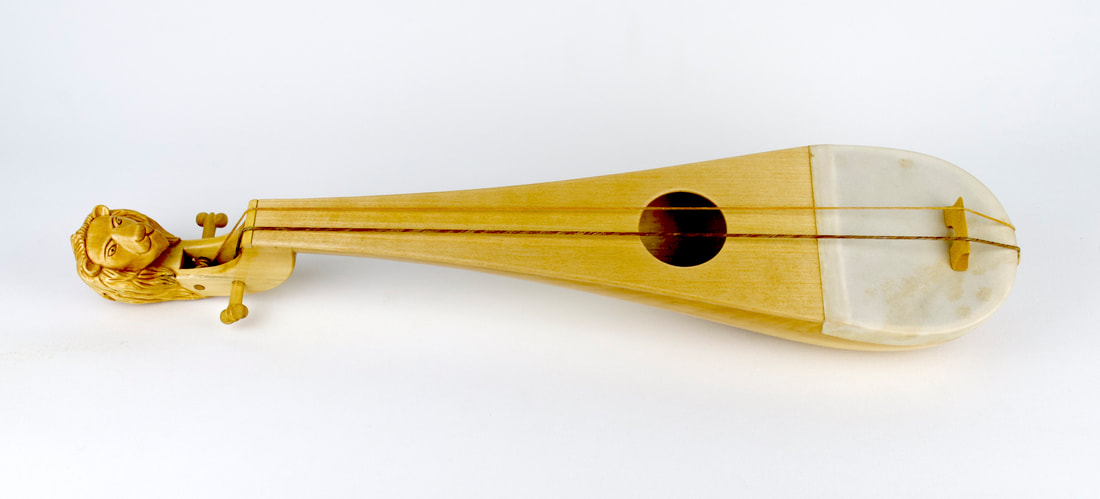RUBEBA / REBAB
2-string Arab-andalusian instrument which appeared between 12th and 13th C. as a result of the evolution of berber peak fiddles to adapt the sound of a bowed instrument to the arab cult music dominated, at that time, by the ud. From that one it tooks the piriform design, the bulgy back and the backwards pegbox, but keeping a short skin top.
The rabab appears described by persian composer and philosopher Abu Nasr Muhammad al-Farabi in his treatise Kitab al-Musiqa al-Kabir (1st half of 10th century) and later by music theorist and dominican friar Jerome of Moravia in his Tractatus de Musica in 1272, under the latin name of rubeba.
The rabab appears described by persian composer and philosopher Abu Nasr Muhammad al-Farabi in his treatise Kitab al-Musiqa al-Kabir (1st half of 10th century) and later by music theorist and dominican friar Jerome of Moravia in his Tractatus de Musica in 1272, under the latin name of rubeba.
LLÍRIA RUBEBA
This instrument appears represented in the mudejar paintings of the Church of the Blood of Llíria (Valencia, 1275).
The body is made of birch, with olive pegs and bridge and goatskin top. It is finished with oil and wax.
SL: 400mm.
Tuning: c-g.
Price: €1700
The body is made of birch, with olive pegs and bridge and goatskin top. It is finished with oil and wax.
SL: 400mm.
Tuning: c-g.
Price: €1700
Jota Martínez ensemble: "De la gensor" (Berenguer de Palou, 12th C.) played with this rubeba.
CANTIGA 170 REBAB
This model of rebab appear in the illustration of Cantiga de Sta. María 170 (1275).
Body and fingerboard made of cypress, with ebony pegs and inlays, pearwood bridge and saddle, and goat skin. It is finished with oil and wax.
SL: 520 mm.
Price: €1900.
Body and fingerboard made of cypress, with ebony pegs and inlays, pearwood bridge and saddle, and goat skin. It is finished with oil and wax.
SL: 520 mm.
Price: €1900.
WESTMINSTER RUBEBA
This rubeba appears represented in the wall painting representing the Apocalypse of Saint John, in the Chapter House of Westminster Abbey (London, around 1400).
The body is linden with a maple fingerboard. The "bollock" pegs and the bridge are made of boxwood. The soundboard is made of goatskin.
SL: 420mm.
Tuning: c-g.
Price: €1700.
The body is linden with a maple fingerboard. The "bollock" pegs and the bridge are made of boxwood. The soundboard is made of goatskin.
SL: 420mm.
Tuning: c-g.
Price: €1700.



